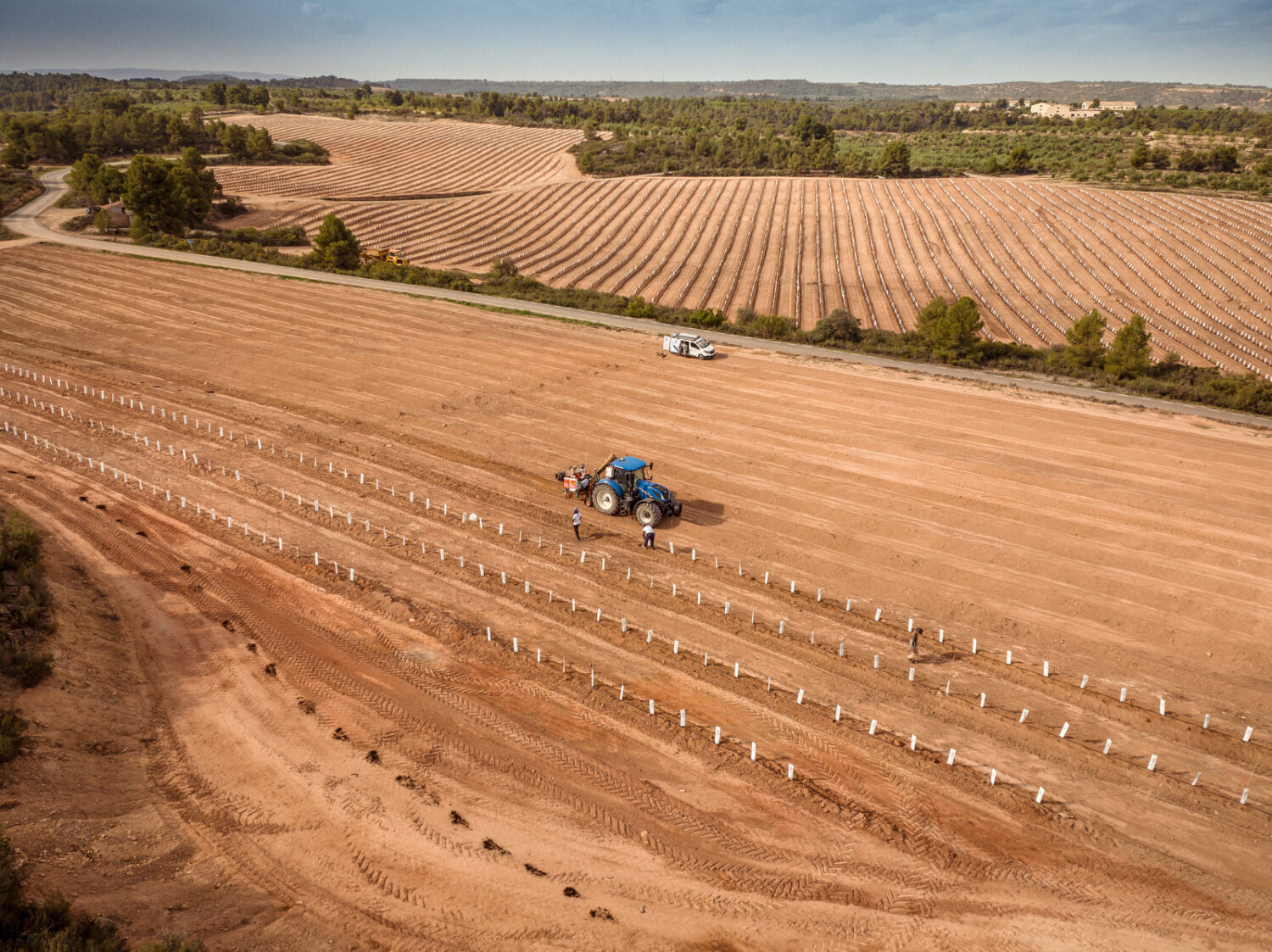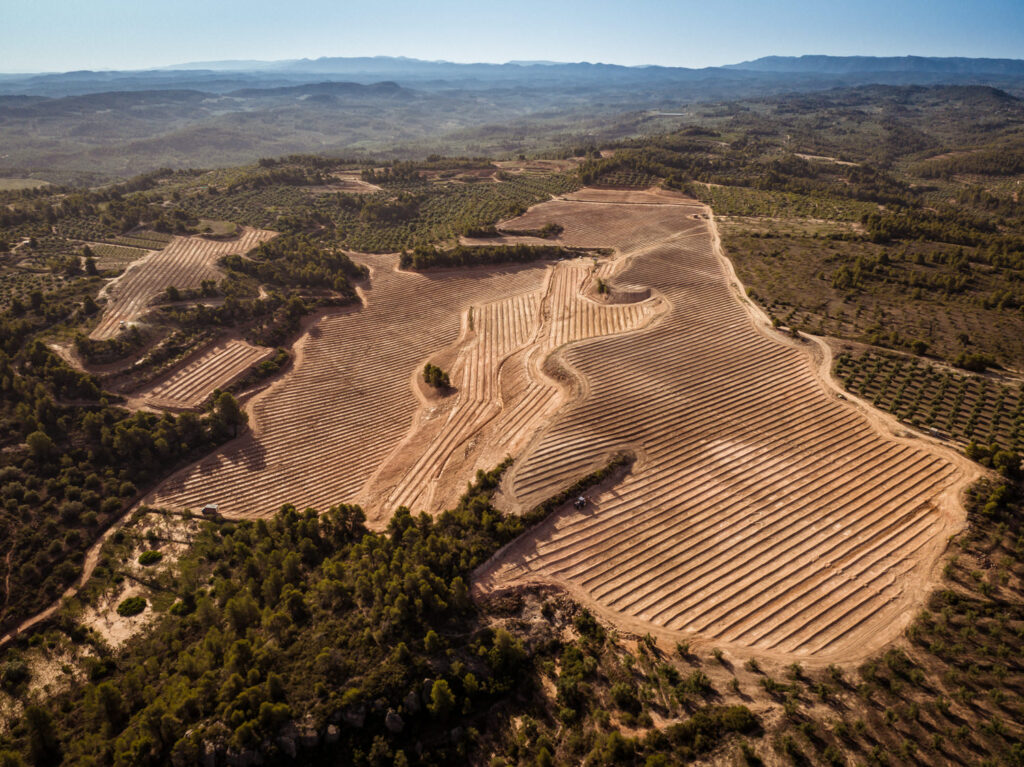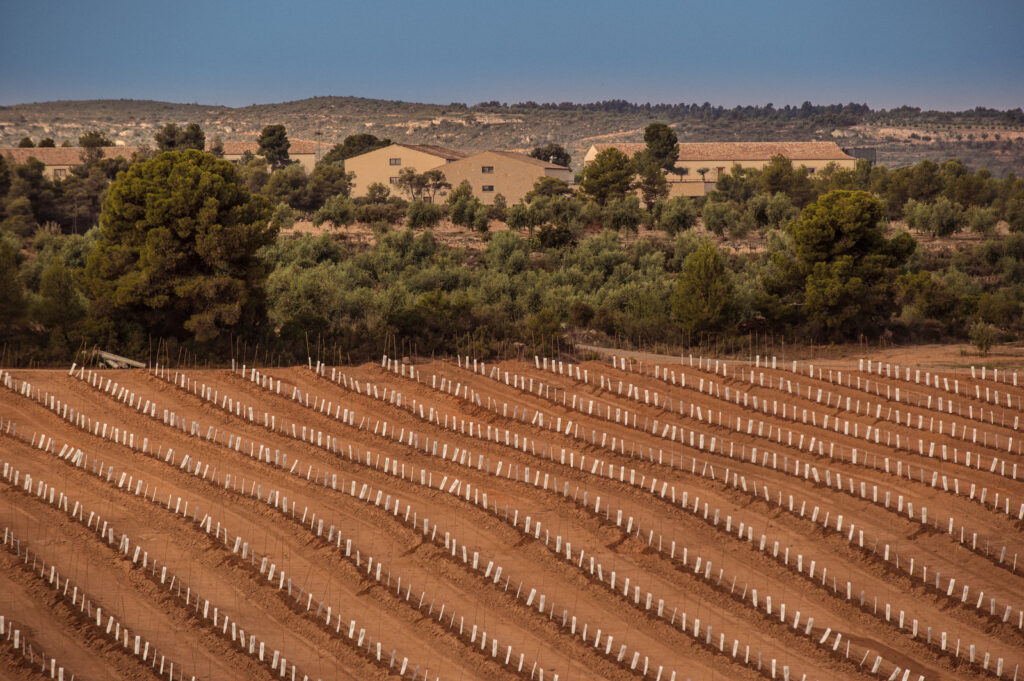I still remember the words of my grandfather Joan, a native of Arbeca, the birthplace of the Arbequina olive, who used to explain to me on hot summer nights on our family farm: “One day water will come to our drylands and on that day the world of olive oil will be very prosperous”.
I remember that in the 80’s, my grandfather’s words surprised me with their forcefulness, but I found them difficult to understand. He was one of the leading figures in olive oil at the time, he was constantly travelling into the future, he was surrounded by the new olive oil trends in Italy, his second homeland.
Our olive grove, in Lleida, was unirrigated and was characterized by a very extensive plantation framework, with no more than 100 olive trees per hectare, in a territory marked by terraces, stones and very little water. This traditional olive grove was sustained by family farming. From the Santa Catarina fair, at the end of November, the harvest began with the aim of harvesting as many olives as possible by hand. The aim was to get ahead of the first severe frost, which would destroy all the quality potential of the new olives. The combination of manual harvesting, extensive olive groves and little manpower made harvesting a long and tedious process, with the harvest ending late in January, with an arbequina olive extremely ripe and in many cases killed by the cold. With such a slow and long harvesting process, many parts of the harvest were lost due to some unforeseen factor: wind, frost, over-ripening, etc.
Fast forward 10 years to the 1990s, and my grandfather’s concepts were completely called into question. We planted an experimental arbequina olive tree farm in our territory with large irrigation capacities, and the result was catastrophic. Trees with large vegetation, uncontrolled, with an excess of irrigation that turns them into a focus of pests, cold damage as a result of excessive humidity and, in short, very few acceptable harvests. The myth of water, linked to the PONS family, is called into question and the conclusion is reached that the olive tree is a dry land tree and that it only survives in these circumstances.
The year 2000 arrived and the turn of the millennium brought technology to the countryside and increased a problem that would become more acute in the following years: the shortage of agricultural labor. Farmers’ overheads increased and olive growing became prohibitively expensive and unprofitable. This is where my grandfather’s words make sense once again. Water is wealth and difficulty sharpens the wits. From all this comes the concept of precision drip irrigation, which administers just the right amount of water to manage the plant. At the beginning of the new millennium, the first *semi-intensive plantations appeared. The concept is to increase the number of olive trees per hectare from 100/ha in traditional cultivation to 600/ha in modern technological cultivation.

In our case, in Pons, we see how these technologies are accelerating and, on the contrary, the hydroelectric structures of our territory are not progressing. We see how the drip irrigation model is gradually taking root and the concept is evolving, moving from semi-intensive to intensive irrigation with plantations of 900-1000 olive trees/ha. Water and technology are the perfect combination to relaunch the world of olive growing. This is the moment when the words of my predecessor take on vital importance and credibility. The business has a future and the key is called water.

Finally we reach 2020 and the longed-for, dreamed-of and mythicized water becomes a pure reality. It is time to accelerate, irrigation water conquers the south of Lleida and our cultivation area enters the cut. Incessantly and thanks to technology, today we are relaunching our family business PONS with the latest version of plantations: The super-Intensive or also called hedgerow olive grove It is our version, it is our moment, plantations of more than 1600 olive trees per hectare in very narrow plantation frames. Farms that are ready to receive the blessing of the liquid gold, modernized farms that produce quality olives in a stable and regular manner. The arrival of super-intensive cultivation at Pons has given us the capacity to harvest early, avoiding the cold weather that is so detrimental to quality. It allows us to cultivate at controlled costs, since mechanization is the management factor on our farms. It allows us to harvest a lot of olives on a the perfect day and at the perfect time to obtain the super olive oil of the future.
Today I can affirm that my grandfather Joan visualized the future of the olive tree thanks to water, even though he failed in his first attempt.
The super quality is already here and it has no other name than modern hedgerow olive tree.
Eduard Pons Suñé, CEO of PONS, fourth generation.


 Català
Català